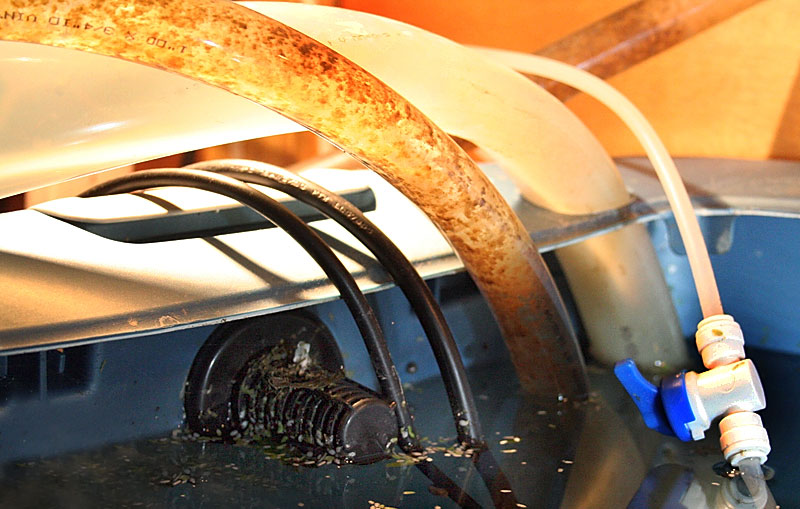240G Technology
 Various hoses and cables leading in and out of my sump.
Various hoses and cables leading in and out of my sump.
Introduction
6' and 8' tanks appear to become more and more popular - in the eastern part of the United States probably to no small part due to the great price at which Glasscages sells the 240G long. This leads to a lot of people wondering how to set up a tank of this size, and unlike for tanks up to 100G or thereabouts, there aren't really any plug-and-play filtration solutions available at your local fish store for these big tanks. Even if you happen to have access to a very good store that can set you up with something suitable, their solution probably wouldn't be cheap. Granted, there are certainly ways to set up a 240G tank cheaper than what I am describing here. Heck, you could just put the bare bottom tank on the floor of your fish room, dump in a few of the larger Hydro Sponge filters, and be done with it. If you just want a big grow-out tank that might be the perfect solution for you. However, if you want something a little more aesthetic, e.g. a show tank to be set up in a living area, things become less straight forward. All my previous show tanks ran with Eheim classic series canister filters, and when I started thinking about a 240G, I figured I'd get the biggest one of those, and if this wasn't enough, I'd get two. That's when I learned that for the amount of filtration I envisaged, I'd need two Eheim 2260, which would set me back at least about $500. At the same time I started reading up on sump systems, and found that for less money, I could probably build something a lot more suitable for this tank than two big canisters. The solution I came up with after lots of reading, and pestering (mostly by email) lots of very knowledgeable people, is described on the following pages. I am describing simply what I did, what worked for me, and what not. I am also citing lots of sources (mostly online) that I consulted before starting on my project. Since most people will want to customize their setup choosing components from here and there to fit their needs, I expect this to be more useful than step-by-step instructions how to build certain things. Some of the techniques I am describing will seem trivial to advanced aquarists, but I bet few people will read these pages and not at least learn one new thing. That in itself makes visiting a site worthwhile for me. I am not aware of any other site that describes the setup of a tank of comparable size quite this comprehensively. In addition, there is the option to leave comments on all pages, so if you feel I missed something, or you would like to complement my observations by your own experiences, please feel free to do so. I am sure the next user will appreciate it as much as I do.
Leave a Reply
You must be logged in to post a comment.
